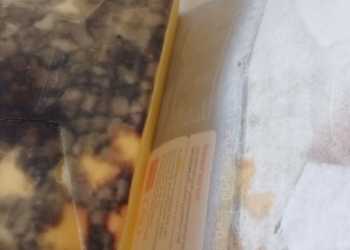Last week’s big news was an escalation in rhetoric, President Macron floating the possibility of European forces deploying into Ukraine and Putin responding with nuclear threats. Meanwhile, on the ground Ukraine is fighting a hard defensive battle. Russian ammunition superiority telling on the defenders and an unusually warm winter meaning that the ground is still muddy and wet making living conditions very difficult.
In the air, Ukraine inflicted another important loss on Russia by shooting down an airborne early warning and command (AWACs) plane, the second this year.
Macron’s discusses NATO intervention, Putin’s response
On 26 February, French President Emmanuel Macron hosted the leaders of 20 countries in Paris to discuss supporting Ukraine. The main talking point around the meeting relates to Macron’s statements, about the possibility of deploying NATO forces in Ukraine, and that ‘nothing was off the table’ when it came to supporting Ukraine. A statement very quickly walked back by other allies and that has triggered Putin to make nuclear threats.
This is an interesting piece of diplomatic manoeuvring, Macron’s intention is to create a level of uncertainty for Russian planners, evidenced by his comments at a press conference last Monday “But I’ve told you very clearly what France maintains as its position, which is a strategic ambiguity that I stand by.” Macron has identified a key NATO weakness; that the alliance has a long history of stating clearly what it will not do. This policy means Russian planners know exactly which threats to make to deter NATO intervention. By being more ambiguous and not taking possible responses ‘off the table’ NATO could create greater uncertainty, disincentivising reckless Russian actions.
The threat of direct NATO intervention weighs heavily on Putin. NATO airpower could secure the skies over Ukraine very easily or sink the remainder of the Black Sea Fleet in very short order. Both low-risk interventions in that neither requires bases in Ukraine or risks a large loss of NATO life. At a higher level of escalation well-trained and equipped NATO ground forces bolstering Ukrainian defences would significantly change the balance of power in Ukraine. Macron’s comments also coincide with NATO conducting its largest exercise since the Cold War, in Poland. The threat implicit in Macron’s statements increased by the current demonstration of NATO’s capability to concentrate force.
Macron’s statements certainly had an effect in Russia, an effect that demonstrates Putin’s fear of NATO. Putin quickly responding with threats of nuclear escalation both clearly stated in speeches and using a ‘leaked’ planning document that detailed Russia’s ‘hair trigger’ for nuclear escalation. Essentially, Putin knows that the only card he holds with regards to NATO is the nuclear threat. He has tried to use propaganda and threats to deter NATO support, economic war by shutting of gas supplies, the vaunted Russian military machine has proven ineffective and its technology is far behind NATO’s leaving nuclear escalation as his only credible threat.
But how credible is that threat?
The most likely scenario is that this rhetoric is a threat designed to play off the fear of nuclear war. In recent decades, Putin has successfully used nuclear threats to deter European intervention and these threats indicate that Putin is rattled. Even by the thought of NATO discussing deployment of forces in Ukraine. That this assessment is the most likely scenario is reinforced by the stage-managed drama surrounding it; leaked documents and impassioned statements by Putin in his annual state of the nation speech.
Boris Bondarev, an ex-Russian diplomat who quit his job to protest the war provided his thoughts for Al Jazeera last week stating that this rhetoric is nothing new and is simply Putin’s “usual scares and a projection of his own unrealised desires on to the West.”
Washington has responded, a State Department spokesperson, Matthew Miller stating that the US has not seen any indication that Russia is preparing to use nuclear weapons. However, Mr Miller did say the US would continue to monitor the situation.
If Russia does decide to escalate to using nuclear weapons, it is most likely to be sudden and unannounced, increasing the impact of the intervention. The aim would be to shock NATO decision-makers into backing down immediately. Therefore, it seems unlikely that these threats will result in nuclear weapons being used in Ukraine anytime soon.
The ground war, Russia pressing its advantage
Russia’s defence industry is producing artillery ammunition and maintaining a steady flow of equipment to the frontline. This situation allows Russia to maintain pressure on Ukraine right across the frontline, but specifically its area of focus appears to be the north and east, between Vuledhar in the south and Kupiansk in the north.
Starting in the north, Russian attacks continue along the Svatove-Kremina Line. Russia using plenty of artillery because Ukraine is preserving its ammunition so does not have spare ammunition for an extensive counter-battery campaign. Russia is still using ‘storm group’ tactics in which an incessant trickle of small teams numbering about five to seven soldiers attack Ukrainian positions. These attacks identifying Ukraine’s positions, particularly heavy weapons teams that can then be targeted by artillery or future attacks.

Russia’s pressure in the north is probably aiming to capture the town of Kupiansk as a prelude to either pushing east towards Kharkiv or south towards Sloviansk and Kramatorsk, the two remaining Donbas cities that are still in Ukrainian hands. Close to this fighting, a Ukrainian salient is developing between Severodonetsk and Kramatorsk. It seems likely that in the next few months an operation to close the salient, possibly pushing west to the Bakhmutka River will be undertaken.
Fighting continues near Bakhmut, as Russian forces try to push east and capture the nearby town of Chasiv Yar. A small town sitting on an important road junction that was the main supply hub for Ukraine’s forces during the battle for Bakhmut. If this town falls, Kramatorsk a city of about 150,000 people will be in range of Russian tube artillery.
Further south, Russia has been reducing the Avdiivka salient. After capturing the town, Russian forces are slowly advancing west capturing small villages and flattening out the front line. This is not unexpected and it is important to note that to-date there has not been any sign of a Ukrainian collapse that could allow Russia to exploit their recent victory. Russian forces also appear to be preparing for an advance south towards Vuhledar, a small town located on high ground that has withstood several large Russian assaults.
Finally, Robotyne the village in south Zaporizhia that represented the hide-tide mark of Ukraine’s 2023 Orikiv Axis of advance was recaptured by Russian forces this week. Another predictable trade, defending a salient is always difficult.
A key observation in the last week is that Russian forces are very active. Probably, hoping to achieve another significant victory before the Russian elections and because strategically they face a period of uncertainty. If the US Congress approves the White House foreign aid package, Russia will be facing a very different strategic situation because Ukraine’s sustainability will be more certain. Currently, Ukraine appears to be weathering the storm before a decision is made in the US or until European aid arrives. So, although there is significant media coverage about Ukraine’s ammunition shortages the lines have not broken or collapsed meaning a key indicator to watch for in the next few weeks is a Ukrainian collapse at any point on the frontline. If this happens it will confirm media reports about Ukraine’s dire situation, if it does not we can be more optimistic about Ukraine’s chances.
European support
NATO countries continue to pledge support for Ukraine. Denmark committing to a US $ 228 million military aid package that includes 15,000 artillery shells. Germany is sending another 14,000 artillery shells and reconnaissance drones and a key topic of discussion at the recent meeting in Paris, hosted by Macron was how to get Ukraine more artillery ammunition. The conference also considered getting more long-range precision-strike weapons to Ukraine, weapons like Storm Shadow.
Longer-term, the European Union is pursuing a programme to increase ammunition production in Europe and by the end of this year plans to be able to manufacture a million artillery shells per annum. Unfortunately, this is a long-time for Ukraine to wait and it is still less than potential Russian production. Hence, the reason US support is vitally important.
Ukraine shoots down another Russian AWAC aircraft
Ukrainian skies are becoming an increasingly dangerous place for Russian aircraft, another Beriev A-50 U AWAC plane being shot down on 23 February. The second Russian AWACs plane to be shot down this month. This loss is another major blow for Russian airpower, AWACs planes are an essential element of air-superiority.

AWACs aircraft use powerful radars to monitor and manage the air battle. Russia’s fleet at the start of the war was estimated at 8-9 of these aircraft and after losing three will struggle to maintain 24-hour surveillance of Ukrainian airspace. In fact, it is rumoured that Russia is planning to re-equip Antonov An-12 transport planes with radars from fighter planes to fill the gap. Using IRBIS-E Passive Electronically Scanned Array radars from Su-35 fighters is an option but is far from ideal. The benefit of a roof mounted radar is that is can provide 360-degree cover where as a fighter radar has a more limited arc.
Additionally, Ukraine claims to have shot down 12 modern fighters this month, 10 Sukhoi Su-34 fighter bombers and two Sukhoi Su -35 fighters. A high loss rate.

A key observation is that an AWACs plane should never be shot down because not only are they supposed be the most informed plane in the air, but they also normally carry extensive electronic defence measures and are able to direct fighter planes in their own defence. So, shooting one down is an achievement and by the time three are shot down, Russian commanders need to be asking some serious questions.
Summary
The ground war continues to be an attritional struggle and Ukraine is fighting hard to hold its defensive lines. The next few weeks leading up to the Russian elections will provide an indication of Ukraine’s actual strength because as Russia applies pressure either the defences will hold; or there may be a collapse somewhere along the frontline.
However, there are factors that mitigate against a catastrophic Ukrainian failure. The first being that Russia does not have huge reserves, its forces are positioned in breadth along the whole frontline. Russia’s largest concentration is of about 100,000 soldiers in the north, on the Svatove-Kremina line. In this area, a breakthrough east towards Kupiansk is unlikely because there are several north-south rivers on that axis that mitigate against rapid exploitation. A breakthrough south or east immediately hits the major urban areas of Sloviansk and Kramatorsk both tough targets to capture, limiting potential exploitation. The remainder of Russia’s areas of operational focus have far fewer soldiers allocated, between 40-60-000 on each. Since it took a force of 50,000 Russians to capture Avdiivka it is unlikely that there will be a catastrophic Ukrainian defeat in the next few weeks.
Looking ahead, the next few months are very important and will confirm Ukraine’s situation. If Russia can break through the defensive lines, even in a limited way it will prove that the scales have tilted in Russia’s favour. Currently, my assessment is that this is unlikely to happen but I may be proven wrong. It is also likely that post-Russian elections, Russia will take time to consolidate and prepare for the arrival of new soldiers that are likely to be mobilised after the election.
However, the most important battle remains the one for international support. Fortunately, Europe appears to be mobilising and starting to understand the impact of unstable domestic politics in the US. A trend that may mitigate a US withdrawal of support. Meanwhile, the world anxiously awaits the deliberations of the US Congress.
Ben Morgan is a bored Gen Xer, a former Officer in NZDF and TDBs Military Blogger – his work is on substack









